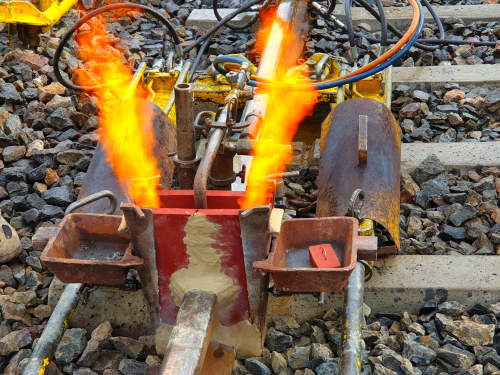Railroad welders have existed since the railroads themselves. Railroad welding is an essential process in maintaining and repairing tracks, but the fumes generated during welding operations can present significant health risks to railroad workers and those nearby.
These fumes have hundreds of constituents, some of which are known carcinogens. One of the constituents is manganese, which, on a prolonged exposure basis, has been associated with some neurological conditions. The question we look at is whether appropriate industrial safety protections were in place to protect welders from the fumes that would get into their faces every day they worked.
These fumes contain various harmful substances, including metal particles, gases, and toxic chemicals that can be inhaled during the welding process. Prolonged exposure to these fumes can lead to a variety of serious health issues, particularly affecting the respiratory and nervous systems. Below are some frequently asked questions (FAQ) regarding the potential health hazards of railroad welding fumes.
If you’re a railroad worker who been diagnosed with an occupational illness, our team at Shapiro, Washburn & Sharp is here to help. We handle cases on a contingency-fee basis, meaning you won’t pay any legal fees unless we win your case. Contact us today at 833-997-1774 for a free consultation.
What Are the Primary Components of Railroad Welding Fumes?
Railroad welding fumes contain a mix of metal particles, gases, and chemicals that can be harmful when inhaled. The primary components typically include:
Metal Fumes
Common metals involved in railroad welding include iron, zinc, manganese, lead, and chromium. Each of these metals has its own set of health risks. For example, manganese exposure can lead to neurological issues, while chromium can increase the risk of cancer.
Gases
The welding process can produce gases such as ozone, nitrogen oxides (NOx), carbon monoxide (CO), and volatile organic compounds (VOCs). Ozone, in particular, can irritate the respiratory system and cause long-term lung damage if inhaled at high concentrations.
Other Toxic Chemicals
In addition to metals and gases, the welding process may release toxic fumes from coatings on the rail, such as paint or other chemicals used in manufacturing. These can include solvents and benzene, both of which are carcinogenic.
How Do Railroad Welding Fumes Affect Respiratory Health?
The respiratory system is particularly vulnerable to the harmful effects of welding fumes, especially with prolonged or repeated exposure. The fine particles in welding fumes can easily enter the lungs and cause irritation, inflammation, and long-term damage. Some potential respiratory issues include:
Chronic Respiratory Conditions
Long-term exposure can lead to chronic conditions such as bronchitis, emphysema, or even asthma. Workers who weld without proper ventilation or protective equipment are at higher risk of these conditions.
Lung Cancer
Certain metals in the welding fumes, such as chromium and nickel, are classified as carcinogens. Chronic exposure to these substances can increase the likelihood of developing lung cancer.
Lung Infections
Over time, inhaling welding fumes can compromise lung function, making it easier for infections to take hold. This is especially true for workers with pre-existing lung conditions.
What Are the Neurological Risks Associated with Welding Fumes?
Prolonged exposure to welding fumes can have serious neurological effects, particularly due to the presence of metals like manganese. When inhaled, manganese can accumulate in the brain, leading to a condition known as manganism, which is similar to Parkinson’s disease. Symptoms of manganism include:
- Tremors
- Difficulty walking
- Muscle stiffness
- Cognitive impairment and memory issues
Manganism typically occurs in workers exposed to high levels of manganese over extended periods, especially in confined spaces where the fumes are not adequately ventilated. Other metals like lead can also affect the nervous system, leading to mood changes, irritability, and long-term cognitive decline.
How Can Your Railroad Injury Law Firm Help?
Our law firm has represented hundreds of railroad workers since the 1980s, handling their FELA claims throughout the eastern U.S.A., and one of our firm’s attorneys co-wrote the treatise: “Railroad Health & Safety: A Litigator’s Guide,” found in most of the nation’s law libraries.
Contact Shapiro, Washburn & Sharp today at 833-997-1774 to schedule a free consultation with an experienced railroad asbestos attorney. Let us help you seek the justice and compensation you deserve.
